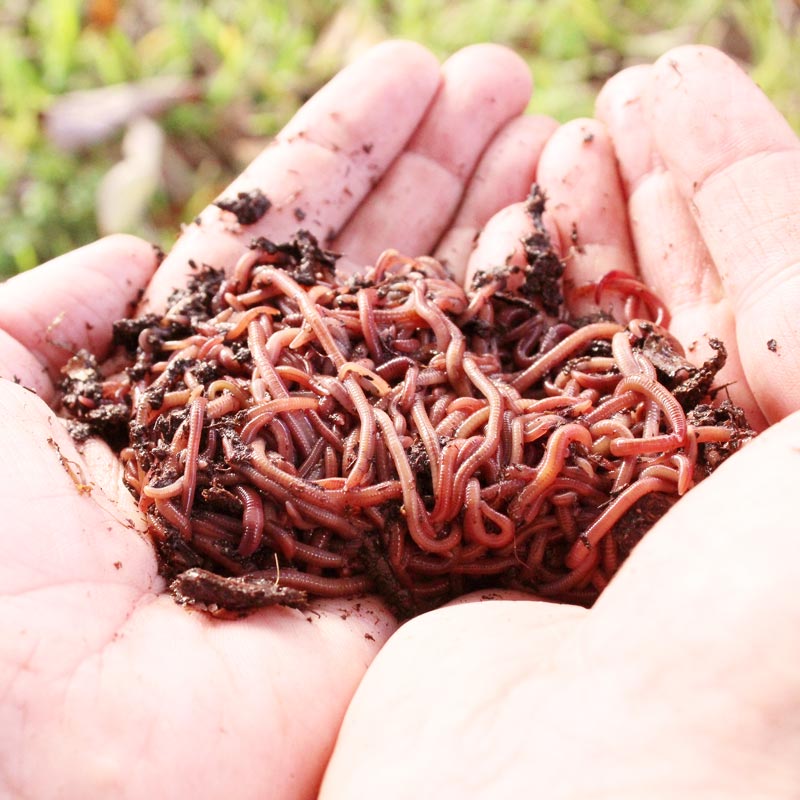Achieve a Greener Lawn with the Help of Red Wiggler Express Lawn Care Solutions
Achieve a Greener Lawn with the Help of Red Wiggler Express Lawn Care Solutions
Blog Article
Unlock the Keys of Red Wigglers: Your Guide to Composting Success
The assimilation of red wigglers into composting methods offers a substantial possibility for enhancing soil health and wellness and promoting sustainability. These microorganisms are not simply efficient recyclers of organic waste; they supply a myriad of advantages that can transform yard monitoring. Understanding their needs and habits is important for maximizing their capacity, from establishing a proper worm container to feeding them the ideal materials. As we explore the crucial elements of effective vermicomposting, one may wonder exactly how these little animals can cause an extra vibrant and efficient garden community.

What Are Red Wigglers?
(Lake Rhodhiss Bait)Red wigglers, medically referred to as Eisenia fetida, are a types of earthworm primarily utilized in composting due to their impressive ability to disintegrate raw material effectively. These worms are characterized by their reddish-brown coloration and a segmented body, commonly measuring in between 3 to 4 inches in length. Unlike various other earthworm species, red wigglers grow in abundant, natural environments, making them excellent for vermicomposting systems.
Indigenous to North America, they are commonly found in decaying fallen leaves and compost heap, where they play an important duty in nutrient recycling. Their adaptation to residing in a moist, cardiovascular environment allows them to consume large quantities of organic waste, simplifying into nutrient-rich castings that boost soil health.
Red wigglers duplicate rapidly, with a single worm capable of producing numerous cocoons each week, each having numerous hatchlings. Understanding the biology and behavior of red wigglers is vital for optimizing their possibility in composting applications.
Benefits of Using Red Wigglers
Using the power of red wigglers in composting provides many benefits that enhance dirt health and wellness and advertise sustainable waste administration. These remarkable microorganisms efficiently damage down raw material, transforming kitchen scraps and yard waste into nutrient-rich vermicompost. This completed product is extremely valuable for plant growth, as it improves soil framework, raises dampness retention, and enhances nutrition availability.

(Red Wiggler Express)In addition, the visibility of red wigglers in your composting system can increase the composting procedure, creating top quality compost in a portion of the moment compared to conventional techniques. The spreadings generated by these worms are also including beneficial bacteria that even more enrich the dirt ecosystem.
Establishing Your Worm Bin
Creating an effective worm container is a straightforward procedure that can significantly enhance your composting efforts. Worm bins can be made from plastic storage space containers, wooden boxes, or commercially readily available worm containers.
Following, prepare the bed linen product, which works as the worms' habitat. A mix of shredded paper, cardboard, and coconut coir works well, giving a comfortable atmosphere for the worms. Goal for a bed linen depth of concerning 4-6 inches. Moisten the bedding gently, guaranteeing it resembles a moist sponge without excess water merging near the bottom.

Feeding Your Red Wigglers
To make sure the health and efficiency of your red wigglers, it is vital to supply them with a balanced diet regimen that fulfills their nutritional requirements. Red wigglers grow on a varied selection of organic materials, which not just supply required nutrients but also advertise effective composting.
Beginning by integrating cooking area scraps such as vegetable peels, fruit cores, and coffee grounds. Prevent citrus fruits, onions, and garlic, as these can be harmful to worm health and wellness. Furthermore, introduce shredded paper, cardboard, and completely dry leaves to produce a well-aerated setting.
Feeding frequency ought to be kept track of; typically, worms can take in half their body weight in food weekly. It is essential to avoid overfeeding, as excess food can lead to undesirable smells and bring in pests. An excellent practice is to add food in percentages, enabling worms to process it before introducing more.
Maintaining wetness degrees is also important; the bed linen ought to perspire yet not soaked. Be sure to routinely inspect the temperature and pH levels of the bin to guarantee an optimum atmosphere for your red wigglers, eventually enhancing their composting efficiency.
Harvesting and Using Garden Compost
An effective composting procedure with red wigglers finishes in the rich, dark garden compost called vermicompost, which can considerably boost dirt health and plant development. Gathering this nutrient-dense material generally occurs every three to six months, depending upon the size of your system and the quantity of raw material being refined.
To gather, carefully different the garden compost from the worms and any type of undecomposed products. One reliable approach includes moving the contents of the container to one side and including fresh bed linens and food to the void, motivating the worms to move. After a few days, the compost can be find more gathered from the opposite side.
It is important to utilize vermicompost appropriately to maximize its benefits. It can be made use of as a leading clothing for garden beds, blended right into potting soil, or made into a nutrient-rich fluid plant food understood as "worm tea." This application technique assists to provide crucial nutrients directly to plant roots, advertising much healthier development. By incorporating vermicompost into your gardening program, you not just recycle organic waste however likewise produce a flourishing ecosystem that sustains sustainable horticulture methods.
Final Thought
In recap, red wigglers serve as outstanding allies in composting initiatives, transforming natural waste right into nutrient-rich vermicompost. By recognizing the optimal problems for their environment, feeding needs, and garden compost harvesting methods, gardeners can improve soil health and wellness and promote plant vigor.
Report this page